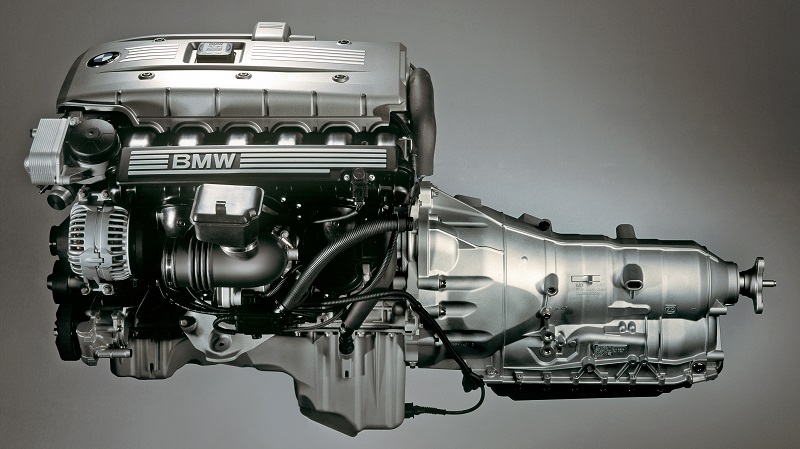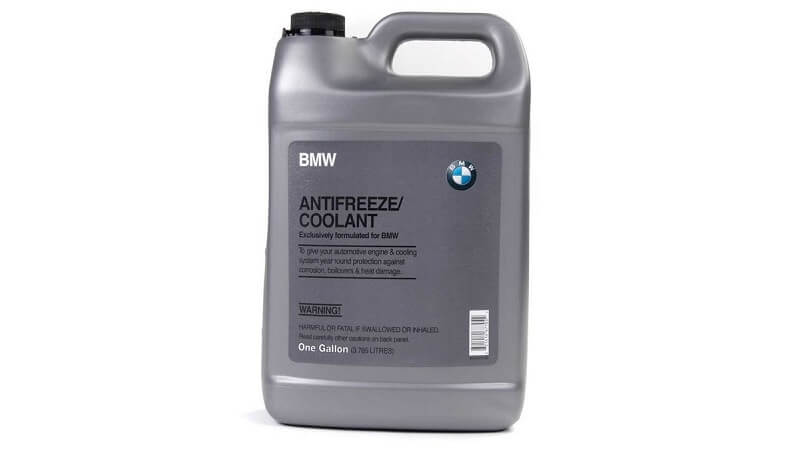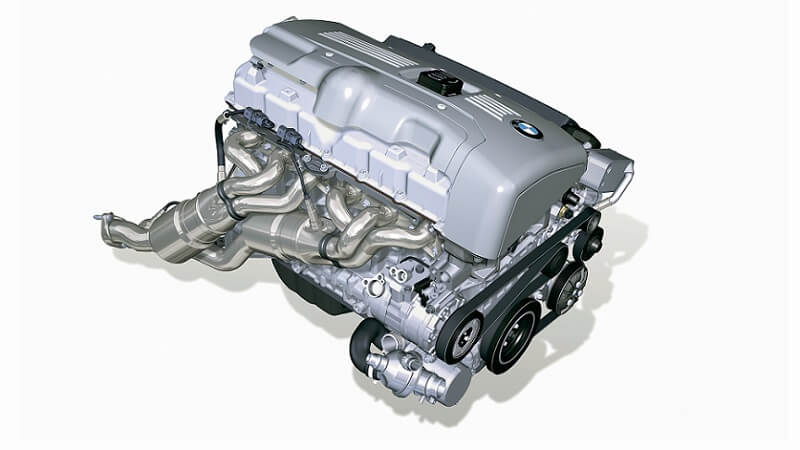By the mid-2000s, BMW had built itself a reputation for developing excellent examples of naturally aspirated inline-six engines. At the turn of the millennium, it revealed the M54 (and the performance-oriented S54 shortly after) and cemented itself as one of the best in the business when it came to the six-pot layout. Needless to say, what followed had to be better. Enter the BMW N52.
The N52 was produced for a little over a decade, from 2004 to 2015. It was the first water-cooled engine to use a magnesium and aluminum composite construction in the engine block. After it debuted on the E90 3 Series and E63 6 Series, it made its way onto multiple models in the company’s lineup.
After eleven glorious years, the N52 retired as the last naturally-aspirated engine that BMW manufactured before its entire lineup transitioned to incorporate turbochargers. It also found itself a place in the history books as one of the most reliable BMW engines of the modern era. An engine so good that it was listed as one of Ward’s 10 Best Engines in 2006 and 2007. Here’s everything you need to know about the BMW N52.

BMW N51 vs N52
Before we dive into the details of the N52, you should know about its half-sibling, the N51. Since emission regulations vary across the United States, BMW was forced to produce a ‘SULEV’ (Super Ultra Low Emissions Vehicles) iteration of the N52 engine; this was the N51. In comparison, the N51 featured a variable-length intake manifold with three stages instead of one, and a lower compression ratio — down from 10.7:1 to 10.0:1.
That said, some core aspects differ between the engines as well. For instance, the two have different cylinder heads as changes were made to the combustion chamber to adhere to ‘SULEV’ regulations. Likewise, the cylinder head cover and crankcase ventilation systems are different. At the end of the day, both these iterations were tuned to produce similar output figures on paper.
The N52: BMW’s Most Reliable Inline-Six
As we mentioned above, the N52 was the first BMW engine to feature a magnesium and aluminum construction. The reason behind this was the manufacturer’s pursuit to build a lighter engine that didn’t compromise on durability. However, since magnesium corrodes more easily than aluminum, BMW came up with the ingenious idea of using a magnesium shell around an aluminum core. The result? A German piece of engineering that drew a comparison to the famed 2JZ ‘GE’ from the far east.
Technology
Following the success of the M54, the N52 had some rather big shoes to fill. BMW delivered by equipping it with its Valvetronic (variable valve lift) system, an electric water pump (in place of a mechanical one), a variable output oil pump, and lastly the lighter engine block that we mentioned above.
Certain elements like electronic throttle control and the company’s double VANOS system (variable valve timing) were carried over from the M54.
Available Versions

The N52 was available in two main engine iterations — a 2.5L unit and a 3.0L unit. The former was dubbed the N52B25, and the latter was the N52B30. The performance of these engines varied greatly depending on which cars they were being used in.
2.5L version
Produced between 2005 and 2011, the N52B25 was available in three engine tunes. Power ranged from 174 hp to 215 hp, while peak torque was between 170 lb-ft and 184 lb-ft, depending on the application.
3.0L version
The N52B30 was produced from 2006 up until 2015 in as many as seven engine tunes. This 3.0L iteration was the more popular and longer-running version of the N52. Peak output varied from 215 hp to 268 hp, and peak torque was anywhere between 199 lb-ft and 232 lb-ft.
All engines tunes of the N52B30 had a bore x stroke figure of 85x88mm and a compression ratio of 10.7:1. However, changes were made to the intake manifolds and ECU to produce different peak numbers.
Which BMWs Use The N52 Engine?
Multiple generations of the BMW 3-Series, 5-Series, 6-Series, 7-Series, Z4, and X range of SAVs were equipped with some form of the N52 engine.
N52B25
The 2.5L N52B25 was used on multiple models including the E90 323i, E60/E61 523i, F10 523i, E83 X3 2.5si, multiple versions of the Z4, and more. Its longest stint was on the E90/E91/E92/E93 325i and 325xi from 2005 to 2011; however, this version of the car was never sold in the U.S. and Canadian markets.
N52B30
The more popular of the two engines, the 3.0L N52B30 was available on several models. Some of them include the E90/E92/E93 325i and 325xi, the E60/E61 525i and 525xi, the F01 730i, and the E87 130i.
From 2006 to 2013, an iteration of the engine was used on the E83 X3, E70 X5, and the E63/E64 630i. This version that produced 268 hp was the most powerful naturally aspirated, inline-six BMW engine on a non-M car.
What Are The Most Common BMW N52 Engine Problems?

When compared to inline-six engines, or even other six-cylinder formats, from other manufacturers, the N52 was in a league of its own. It was an award-winning example of precision German engineering that eventually stood the test of time. However, like everything mechanical, the N52 did face some occasional issues, some more common than others. Here are some things you should look out for if you’re in the market for a used BMW that runs an N52:
Ignition Coil Issues
Numerous N52 owners have reported ignition coil failures on their engines. While some attribute this to faulty factory coils, the real cause of the issue is a mix of inconsistent maintenance and the use of cheap parts. If we exclude defective coils, many have failed due to worn spark plugs, which forced the coil to work overtime in order to compensate for spark plug wear. If you’re dealing with ignition coil issues on your N52, we’ve written a complete piece on how to diagnose and fix your ignition coils at home. All you need are basic tools, some free time and the right ignition coil parts.
Water Pump Failure
Unlike the M52 that preceded it, the N52 introduced an electric water pump instead of a mechanical unit. While this brought many advantages, including the ability for the ECU to adjust flow rate depending on how you were driving, it was still a relatively new technology for the manufacturer. They were built rather poorly and there have been numerous reports of them cracking as early as after 40,000 miles.
In case your water pump fails, you should notice your engine overheating, or see steam coming out of the radiator. The stock water pump uses a plastic impeller and replacing it with one that uses a metal one should last longer.
VANOS Failure
The N52 features BMW’s variable valve timing system for the intake and exhaust valves also called double VANOS. The technology comprises VANOS solenoids that control the flow of oil to the actuators that move the cam gears, thus opening and closing the valves.
One of the more common problems with the N52 was the failure of these solenoids. In such an event, your engine will still run, but there will be a noticeable drop in power, along with other symptoms like a rough idle.
Luckily, the solenoids are not a very expensive or labor-intensive part to replace. They usually tend to last for about 70,000-75,000 miles, but we recommended replacing them at regular intervals to avoid any unexpected drops in engine performance.
Hydraulic Valve Lifters
The N52 features hydraulically adjusted valve lifters, and they tend to wear out on engines that have higher mileage. A lot of long-term owners complain about a ‘ticking’ noise coming from the engine and more often than not, worn-out valve lifters are the problem. It’s most prevalent on cold starts and before the engine warms up.
A faulty valve lifter doesn’t drastically affect the performance of the engine, but if left unattended, it can turn into a bothersome rattle. They tend to ‘tick’ when there isn’t enough oil reaching them to function properly.
This happens because of a poorly designed cylinder head and lifters and is most common on N52 engines produced before 2008. In 2009, BMW changed the design of the lifters and the cylinder head, but there are still some reports of post-2009 cars that have faced this issue.
Valve Cover Gasket Oil Leaks
A valve cover gasket oil leak is an issue that plagues multiple BMW engines, and not just the N52. In most cases, it happens over time, after the heat from the engine wears the gaskets down and causes them to crack.
Maintenance checks in regular intervals can help avoid this. The smell of burning oil, an oil leak, or smoke from the valve cover region could likely mean that the gasket is due for a change.
Oil Filter Housing Leak
Just like the valve cover gasket, the oil filter housing gasket will deteriorate over time, too. The gasket seals the oil filter housing to the engine and if it cracks, it can cause oil to leak. While all oil leaks must be rectified as soon as detected, attending to an oil filter housing leak is important as it can cause serious mechanical problems if ignored.
If oil leaks onto the serpentine belt, it can cause the belt to slip off and send bits of it into the front crank seal and the engine. This can have catastrophic consequences that could result in a destroyed engine.
Keep Your N52 Running with Genuine Parts
Despite being one of the most reliable engines to come from the Bavarian giant, the N52 still requires proper maintenance. If something eventually fails on these engines, it’s imperative that you use only Genuine BMW or OEM parts to fix your car.
To find everything you need in this category, simply head over to our online store, select your bimmer, and you’ll be presented with an array of products that perfectly match your car. Don’t compromise on reliability, treat your BMW as well as it treats you!





